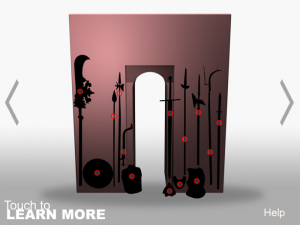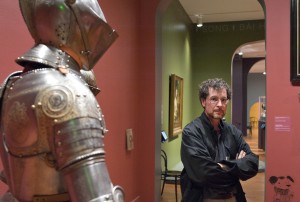His publications include books on daily life in Elizabethan England (1995; 2009) and Chaucer’s England (1995; 2009), and a critical translation of Joachim Meyer’s Kunst des Fechtens (Art of Combat) of 1570 (2006; 2014). His other works include Francis Willughby’s Book of Games: A Seventeenth-Century Treatise on Sports, Games, and Pastimes (2003) and The Illuminated Fightbook: Royal Armouries Manuscript I.33. (2013).
In addition, he currently has what he describes as “a backlog of publications coming out that represents a decade of frustration with publishers.”
Two books appeared in the past year: The Art of Swordsmanship by Hans Lecküchner (Boydell and Brewer, 2015) and The Art of Combat: A German Martial Art Treatise of 1570 by Joachim Meyer (2nd rev. printing, 2015).
In 2016, two more books will be published: Joachim Meyer’s Art of Sword Combat(Frontline Books, forthcoming 2016) and The Book of Horsemanship by Duarte I of Portugal (Boydell and Brewer, forthcoming 2016).
“It’s not a sustainable rate of production,” says Forgeng ruefully. “I wrote them over the past decade and I’ve been waiting for publishers to bring them across the finish line.”
He is currently working on Pietro Monte’s Collectanea (c. 1490-1509), which he will probably send to a publisher this summer.
Forgeng’s dual post in Worcester began 16 years ago as a collaboration between WPI and the 83-year-old Higgins Armory Museum, which closed its doors at the end of 2013. He subsequently supervised the transfer of the world-renowned collection to the Worcester Art Museum.
“It’s loving its home,” he says of the 2,000-piece (and growing) collection, one of the most extensive in the world. “We have a very strong staff at the Worcester Art Museum, a very skilled conservation department, excellent resources to really care for the collection. We’re still in the process of developing plans for a long-term permanent installation, but we have [the exhibit] ‘Knights!’ up currently.”
At WPI Forgeng has served as the principal advisor for many IQPs, for 15 years while he was at Higgins and now at the WAM.
At the armory museum, WPI students helped to establish the historical context for the objects. Their contribution was vital in documenting and digitizing parts of the collection.
At both institutions, students have created virtual games to accompany aspects of the collection.
One IQP student is currently finishing a mini-game based on the art museum’s original copy of Joachim Meyer’s sixteenth-century swordplay manual, The Art of Combat (Die Kunst des Fechtens).
The treatise, which Forgeng has recently published in translation, will go on display at the museum this spring. Using artwork from the book as its setting, the game gives the player different options for techniques to engage in the style of fighting depicted.

This interactive program developed by an IQP team is on an iPad in the Knights gallery, allowing visitors to select objects and read more information on them.
Another ongoing IQP group is creating an audio experience to accompany visitors to the museum’s chapter house, a 12thCentury room in a monastery set up in a first-floor gallery.
“The audio takes you through a little story as a visitor to the monastery,” he says. “You learn about the physical and human setting of the chapter house.”
In D-Term, he will work with an IQP group through the Worcester Project Center for the first time.
Where earlier projects emphasized historical context, “now they will tend to focus more on sociological methodology, museological methodology: looking at ways in which museums can present content for the public or interact with the public,” he says. “Students will use the tools of social science to analyze what those options are and what kind of effect they have with the public.”
To that end, the group of five students will be working with him to evaluate different interpretative media, he says, including “hardcopy text, handout laminates, AV content, digital content, audio content.”
The project is tied to the reinstallation of the Medieval Gallery. The gallery closed at the end of last year and will open again in December.
In its new iteration, the gallery will combine WAM’s outstanding pre-existing collection of ecclesiastical artwork with the chivalric arms and armor of the Higgins collection to tell a new story for 21st-century audiences,” notes the WAM website. The installation will include both interactive and hands-on experiences.
Forgeng describes the WPI students’ involvement as a “classic IQP project” in that “the concept of the IQP is to put technology in its context.”
Ultimately, the group hopes to learn how visitors respond to different technologies of communication within the museum environment.
– BY LAURA PORTER




